APAH: Indigenous Americas Test
1/19
There's no tags or description
Looks like no tags are added yet.
Name | Mastery | Learn | Test | Matching | Spaced |
|---|
No study sessions yet.
20 Terms
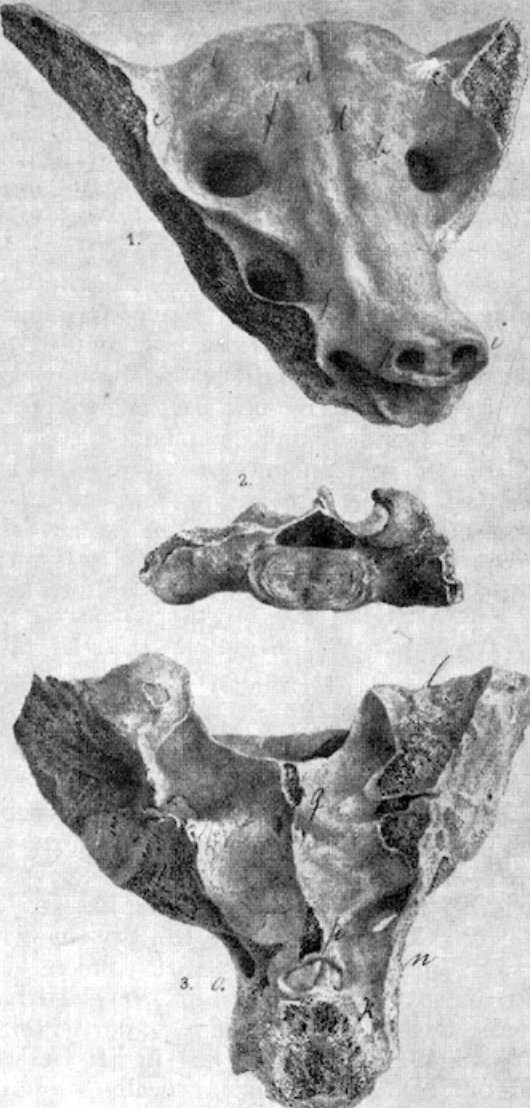
Title: Camelid sacrum in the shape of a canine. Origion: Tequixquiac, central Mexico.
Date: 14,000– 7000 B.C.E.
Material: Bone.
Function: suggests a spiritual purpose, possibly related to shamanic rituals, fertility, or the symbolic importance of the sacrum as a "second skull" representing the soul or a portal between worlds

Title: Tlatilco female figurine.
Origin: Central Mexico, site of Tlatilco.
Date: 1200–900 B.C.E.
Material: Ceramic.
Function: fertility symbols
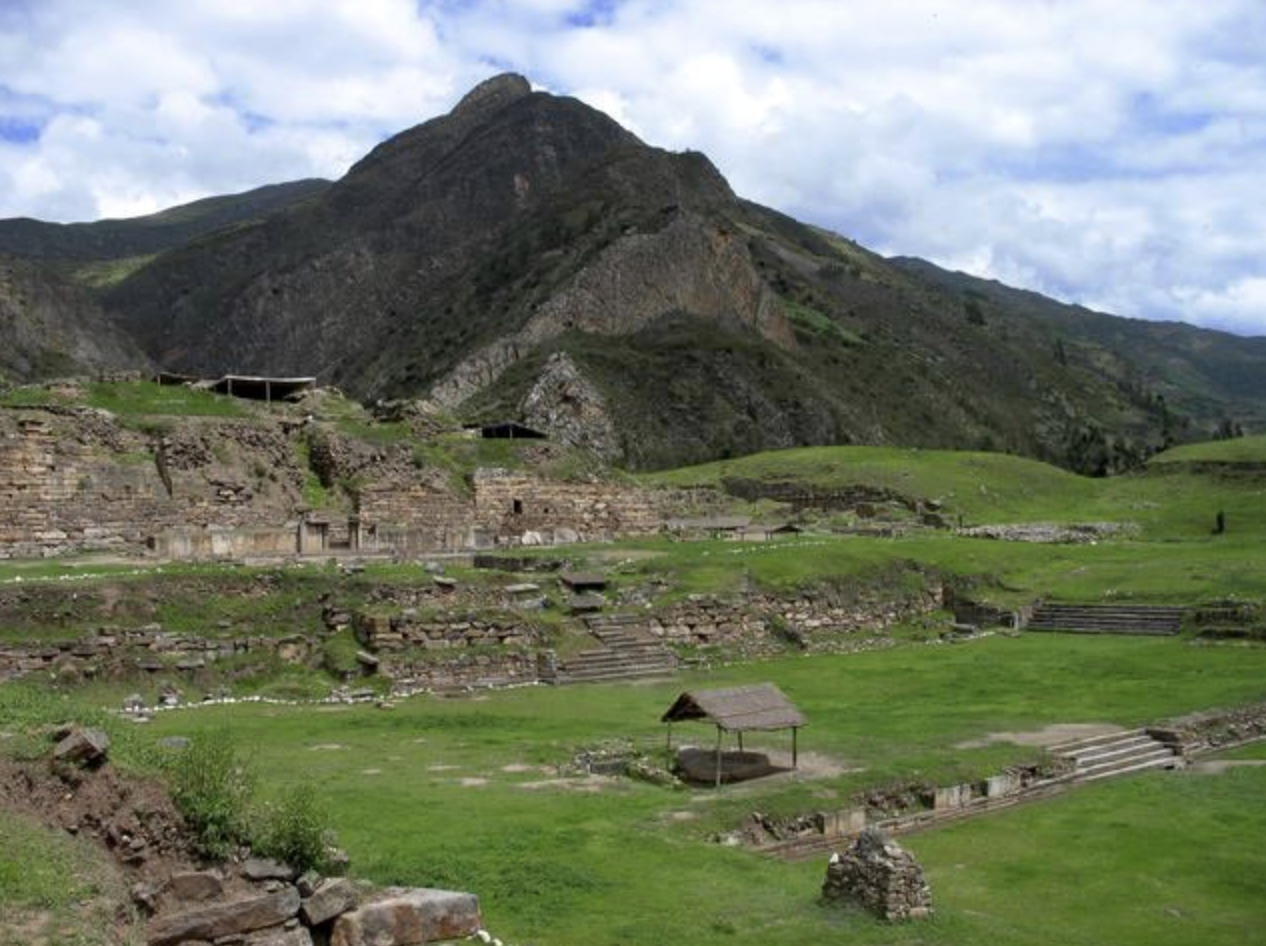
Title: Chavín de Huántar.
(3 images) Northern highlands, Peru. Chavín. 900–200 B.C.E. Stone (architectural complex);
granite (Lanzón and sculpture);
hammered gold alloy (jewelry). Plan and carved wall.
Function: religious, ceremonial, and as a pilgrimage center for the Andean world, faciliatated cultural exchange
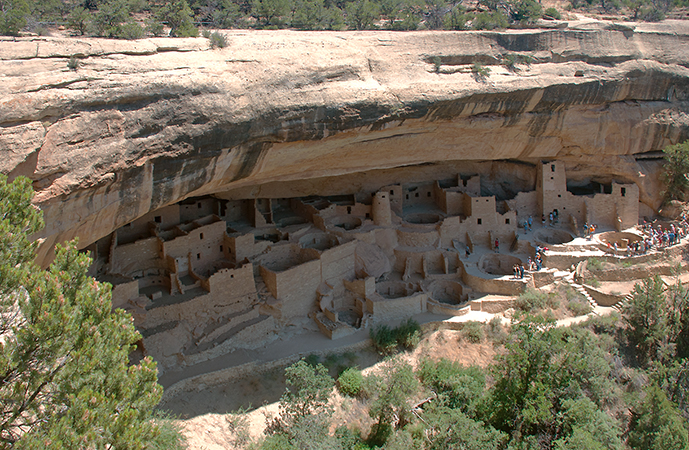
Title: Mesa Verde cliff dwellings.
Origin: Montezuma County, Colorado. Ancestral Puebloan (Anasazi).
Date: 450–1300 C.E.
Material: Sandstone.
Function: Cliff dwellings functioned as a place of community for Puebloans

Title: Yaxchilán.
Origin: Chiapas, Mexico. Maya.
Date: 725 C.E.
Material: Limestone (architectural complex). Lintel 25
Function: a center for trade, military activity, and ceremonial events. It controlled key trade routes along the Usumacinta River
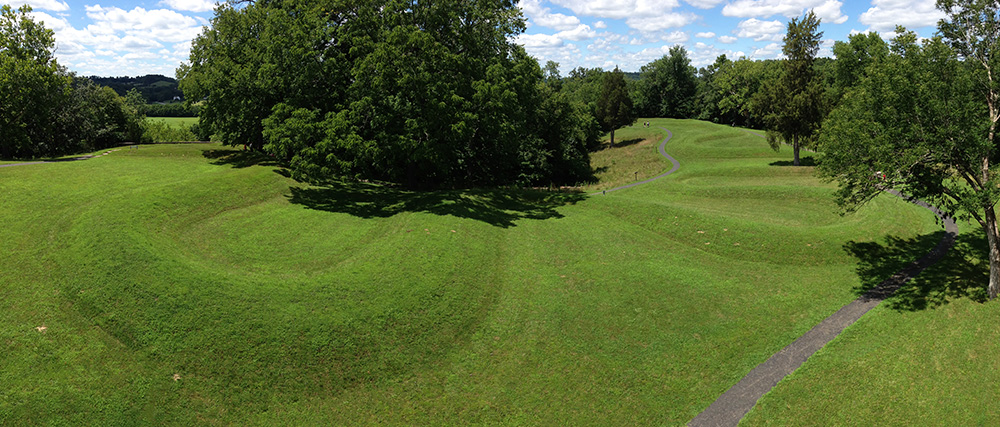
Title: Great Serpent Mound.
Origin: Adams County, southern Ohio. Mississippian (Eastern Woodlands).
Date: c. 1070 C.E.
Material: Earthwork/effigy mound.
Function: architectural and sculptural and was erected by settled peoples who cultivated maize, beans and squash and who maintained a stratified society with an organized labor force, but left no written records.
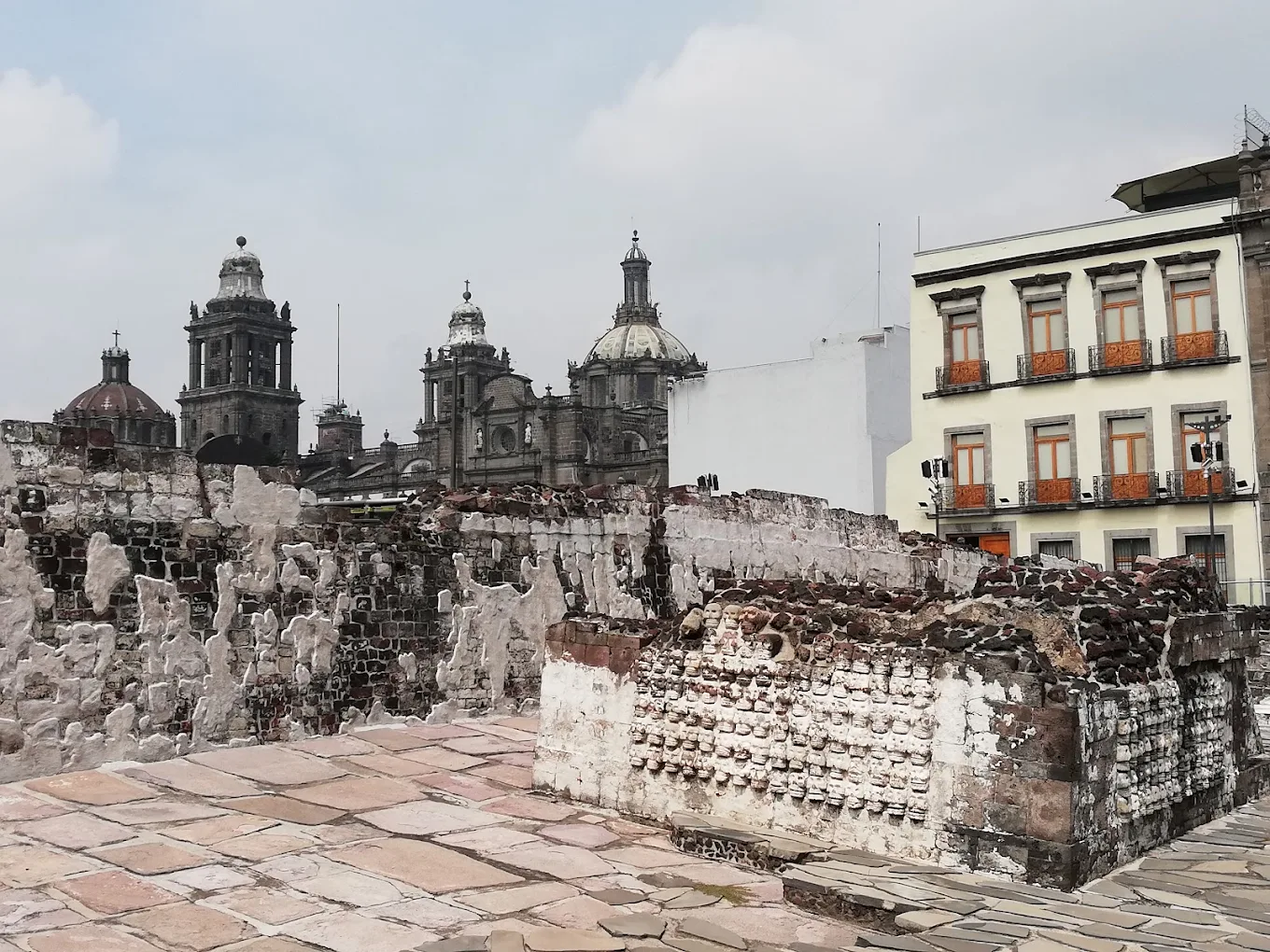
Title: Templo Mayor (4 works)(Main Temple). Origin: Tenochtitlan (modern Mexico City, Mexico). Mexica (Aztec).
Date: 1375–1520 C.E.
Material: Stone (temple); volcanic stone (The Coyolxauhqui Stone); jadeite (Olmec-style mask); basalt (Calendar Stone).
Function: the religious, political, and social heart of the Aztec capital of Tenochtitlan, serving as the central site for ceremonies, human sacrifices, and festivals honoring the gods Huitzilopochtli (war and sun) and Tlaloc (rain and agriculture)

Titie: Ruler’s feather headdress (probably of Motecuhzoma II).
Origin: Mexica (Aztec).
Date: 1428–1520 C.E.
Material: Feathers (quetzal and cotinga) and gold.
Function: ceremonial and ritualistic purposes, transforming the wearer and reinforcing their authority during important events, authority, divine connection
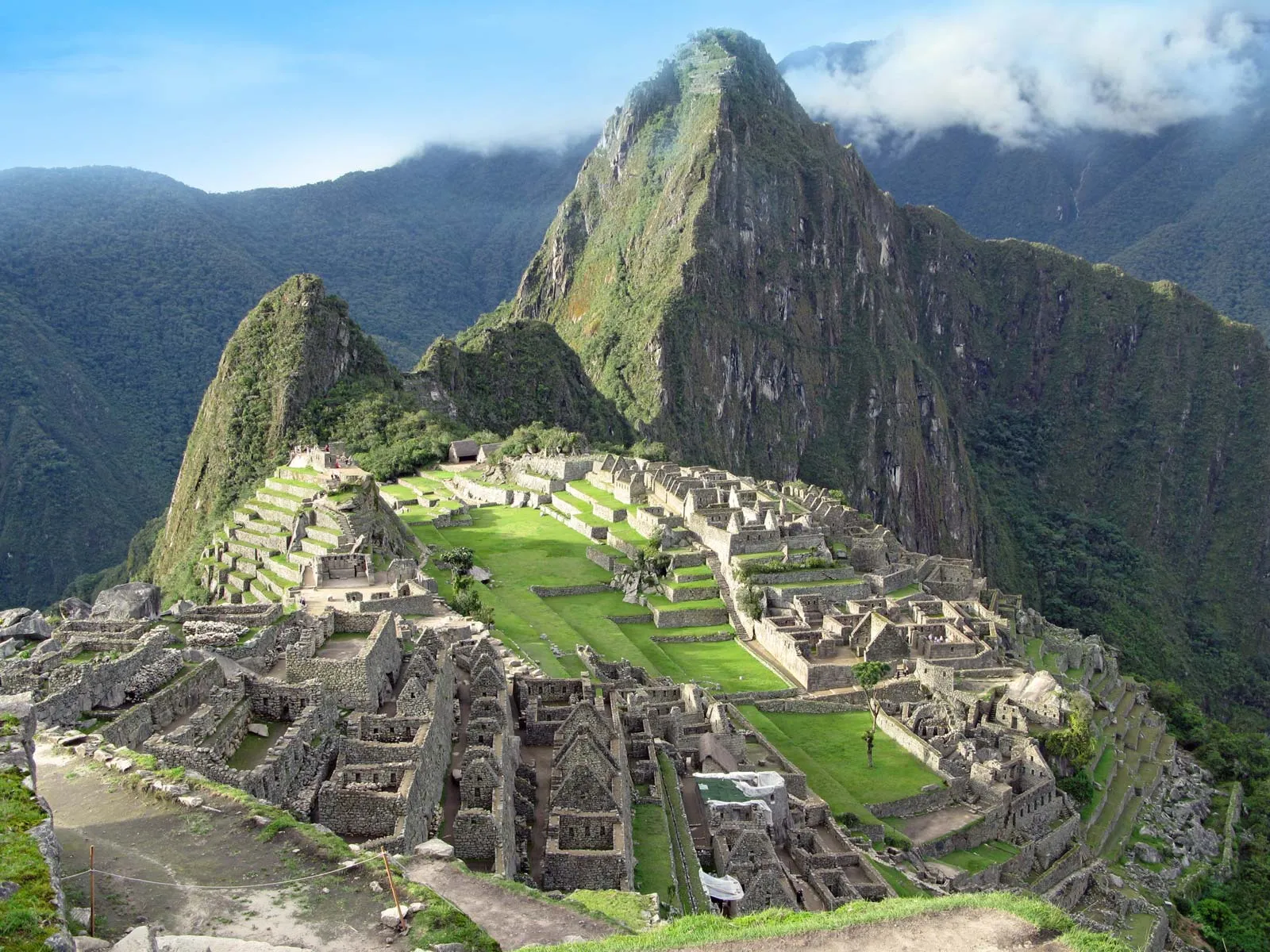
Title: City of Cusco, (3 images)
Origin: Central highlands, Peru. Inka.
Date: c. 1440 C.E; convent added 1550–1650 C.E.
Material: Andesite. plan
Qorikancha (Inka main temple), - the most important temple and spiritual, astronomical, and political center of the Inca Empire, dedicated to the Sun God Inti
Santo Domingo (Spanish colonial convent), - political, economic, industrial, commercial, and cultural center of the Dominican Republic
Walls at Saqsa Waman (Sacsayhuaman). - defense and religion, while their unique construction also stabilized the hillside and protected against earthquakes.
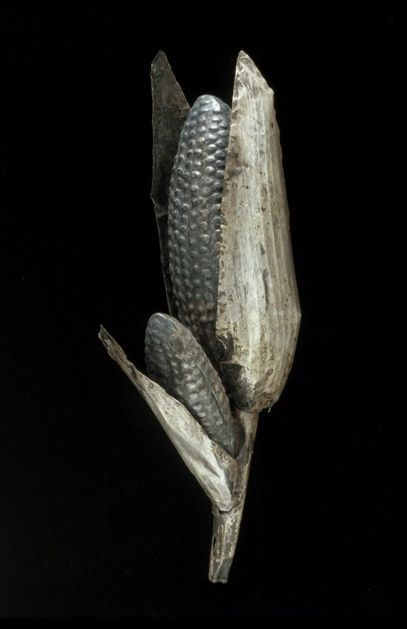
Title: Maize cobs.
Origin: Inka. c.
Date: 1440–1533 C.E.
Material: Sheet metal/repoussé, metal alloys.
Function: They looted Inka objects in large quantities and sent many back to Spain. The silver corncob and stalk were likely part of the spoils captured in this raid, The Inka commonly deployed small-scale naturalistic metallic offerings, like the silver alloy corncobs, in ritual practices that supported state religion and government.
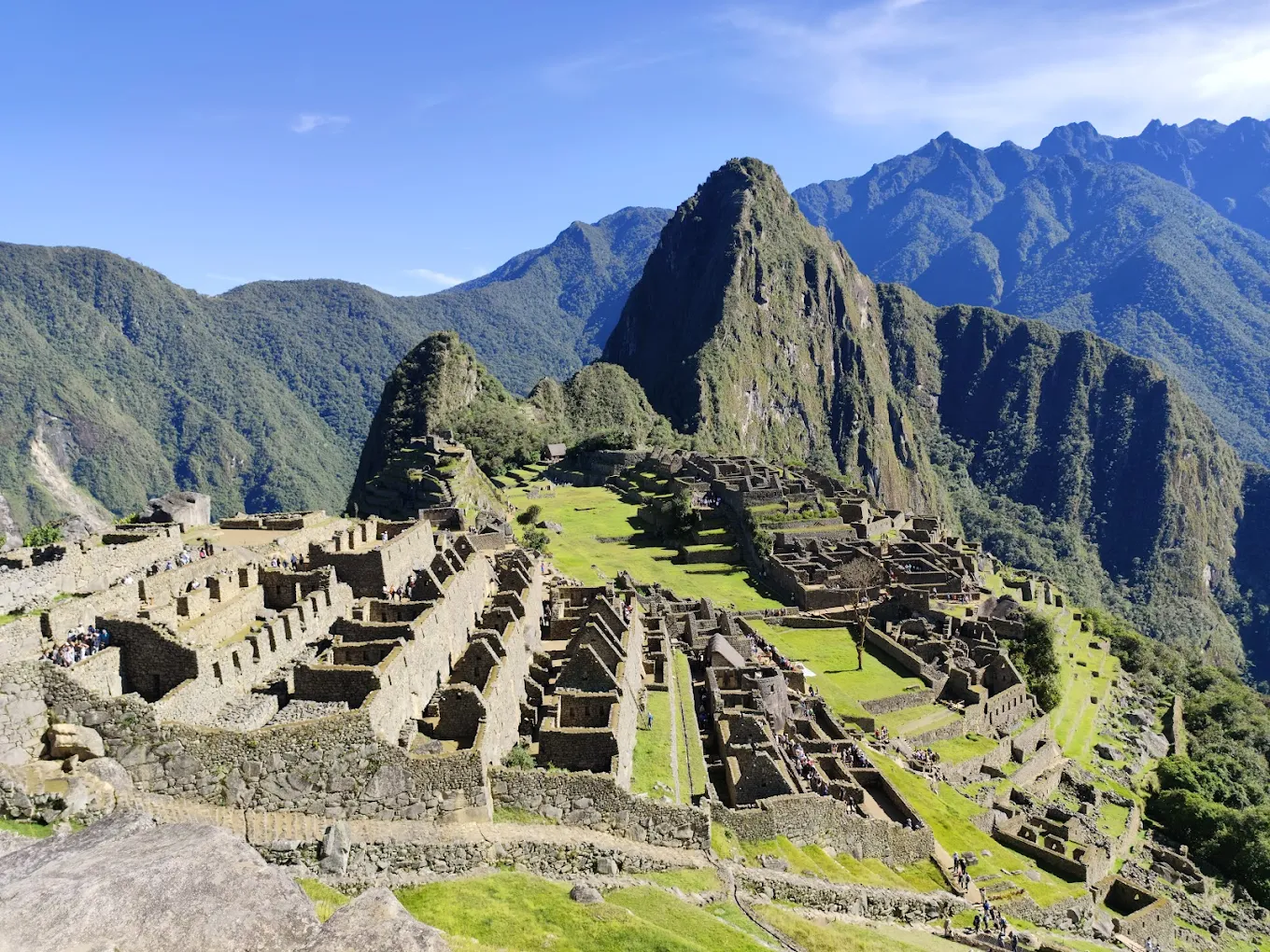
Title: City of Machu Picchu. (3 images)
Origin: (Central highlands, Peru. Inka. c.
Date: 1450–1540 C.E.
Material: Granite (architectural complex). Observatory and intihuatana stone
Function: a multifaceted estate for Inca Emperor Pachacuti and his family, serving as a royal retreat, ceremonial center, and astronomical observatory
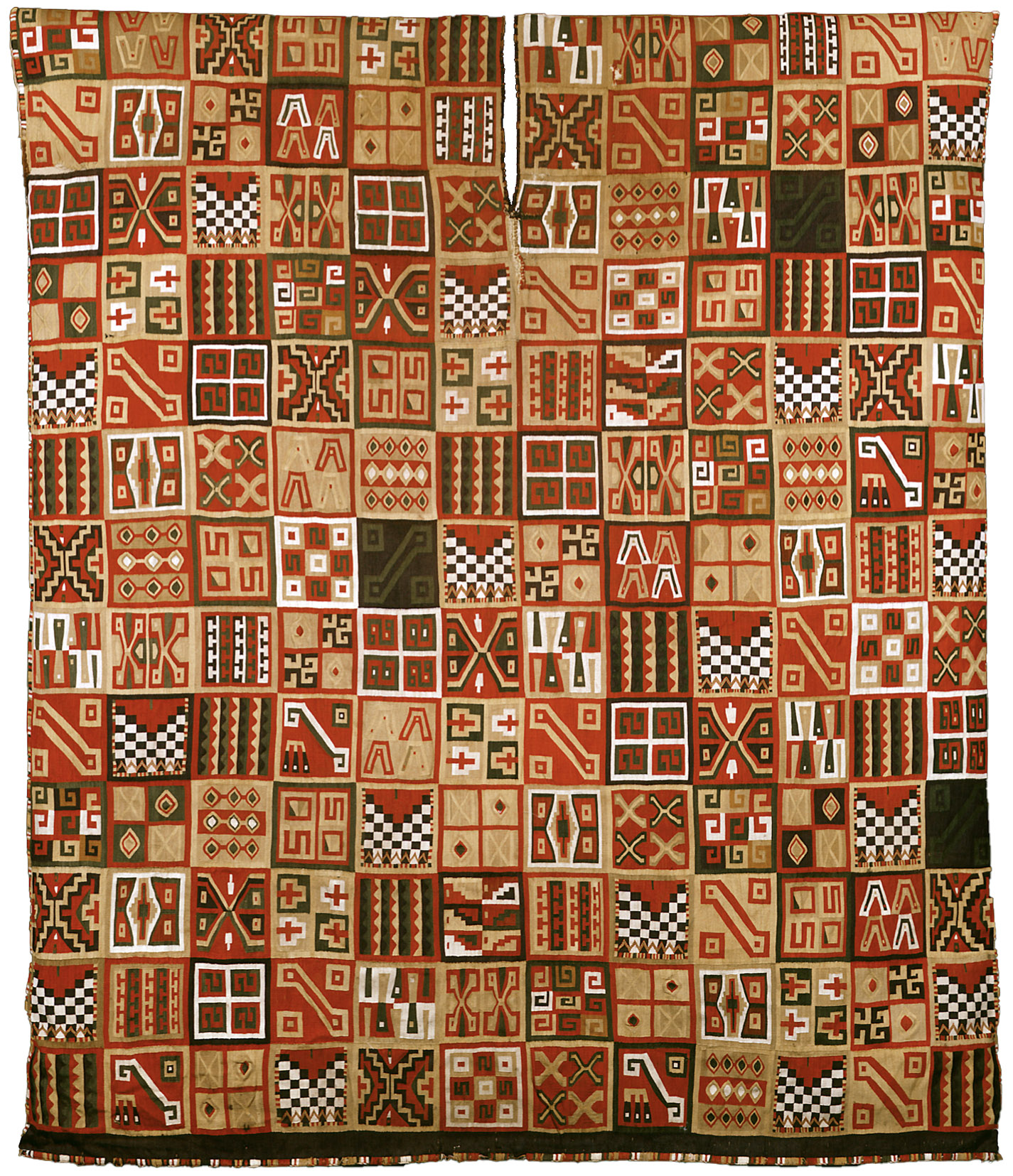
Title: All-T’oqapu tunic.
Origin: Inka.
Date: 1450–1540 C.E.
Material: Camelid ber and cotton.
Function: Finely-made textiles from the best materials were objects of high status among nearly all Andean cultures, community activity as everyone was involved,
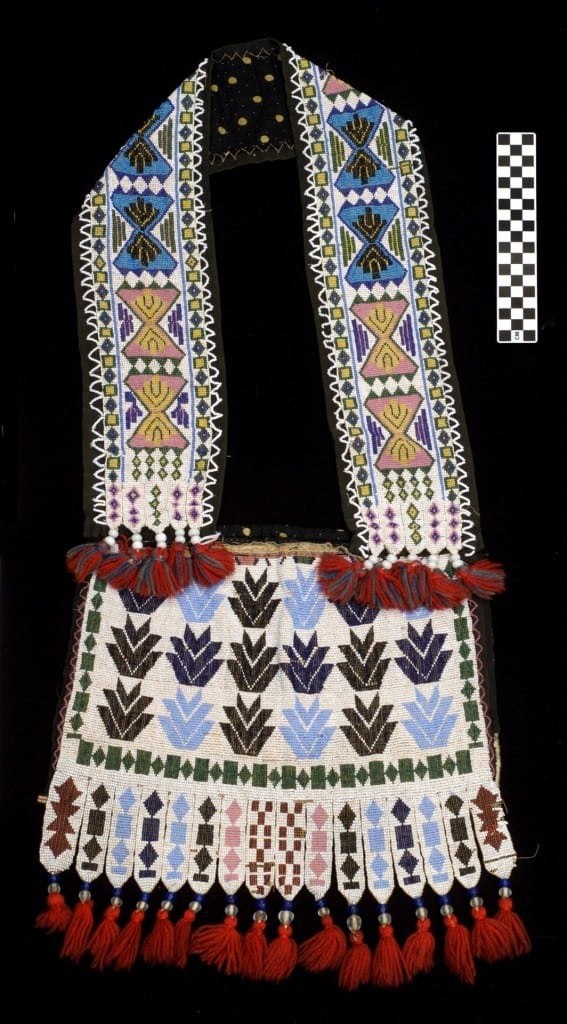
Title: Bandolier bag.
Origin: Lenape (Delaware tribe, Eastern Woodlands).
Date: c. 1850 C.E.
Material: Beadwork on leather.
Function: Originally modeled after European soldiers' cartridge belts, these large, decorated bags are worn diagonally across the chest by men for formal or festive occasions.
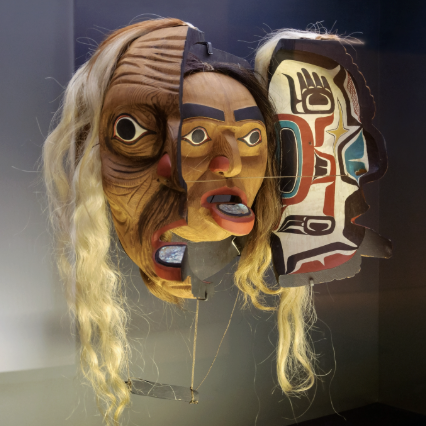
Title: Transformation Mask, Kwakwaka’wakw. Origin: Northwest coast of Canada.
Date: Late 19th century C.E.
Material: Wood, paint, and string
Function: ceremonial objects for storytelling and spiritual connection, using a mechanical opening and closing action to depict ancestors transforming between animal and human forms during dances and potlatches
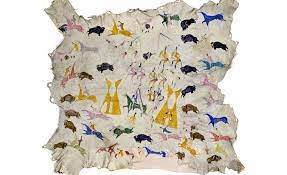
Title: Painted elk hide.
Origin: Attributed to Cotsiogo (Cadzi Cody), Eastern Shoshone, Wind River Reservation, Wyoming.
Date: c. 1890–1900 C.E.
Material: Painted elk hide.
Function: record history, preserve cultural traditions, and serve an aesthetic or decorative purpose, often depicted as a mural or tapestry-like art form
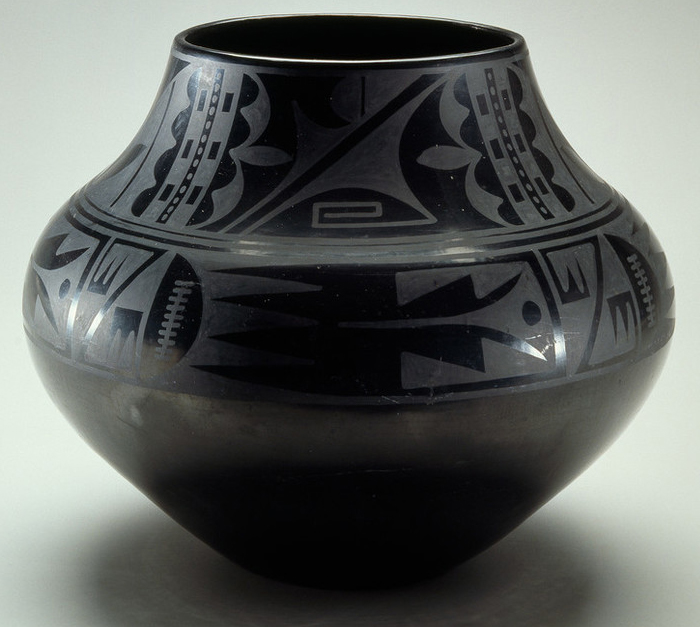
Title: Black-on-black ceramic vessel.
Artist: Maria Martínez and Julian Martínez, Tewa, Puebloan, San Ildefonso Pueblo, New Mexico.
Date: c. mid-20th century C.E.
Material: Blackware ceramic
Function: modernity of tradition = decorative art, rather than utilitarian use. While they are based on historically functional Pueblo pottery forms, they are made to be admired for their beauty and craftsmanship, not for storing food or water

Title: Conical tower and circular wall of Great Zimbabwe.
Origin: Southeastern Zimbabwe. Shona people. Date: c. 1000–1400 C.E.
Material: Coursed granite blocks.
Function: Conical tower and circular wall of Great Zimbabwe = symbolic granary representing the king's wealth and generosity, while the circular wall served multiple purposes, including demonstrating power, protecting the royal enclosure and royal family, and potentially serving as a ceremonial or religious center
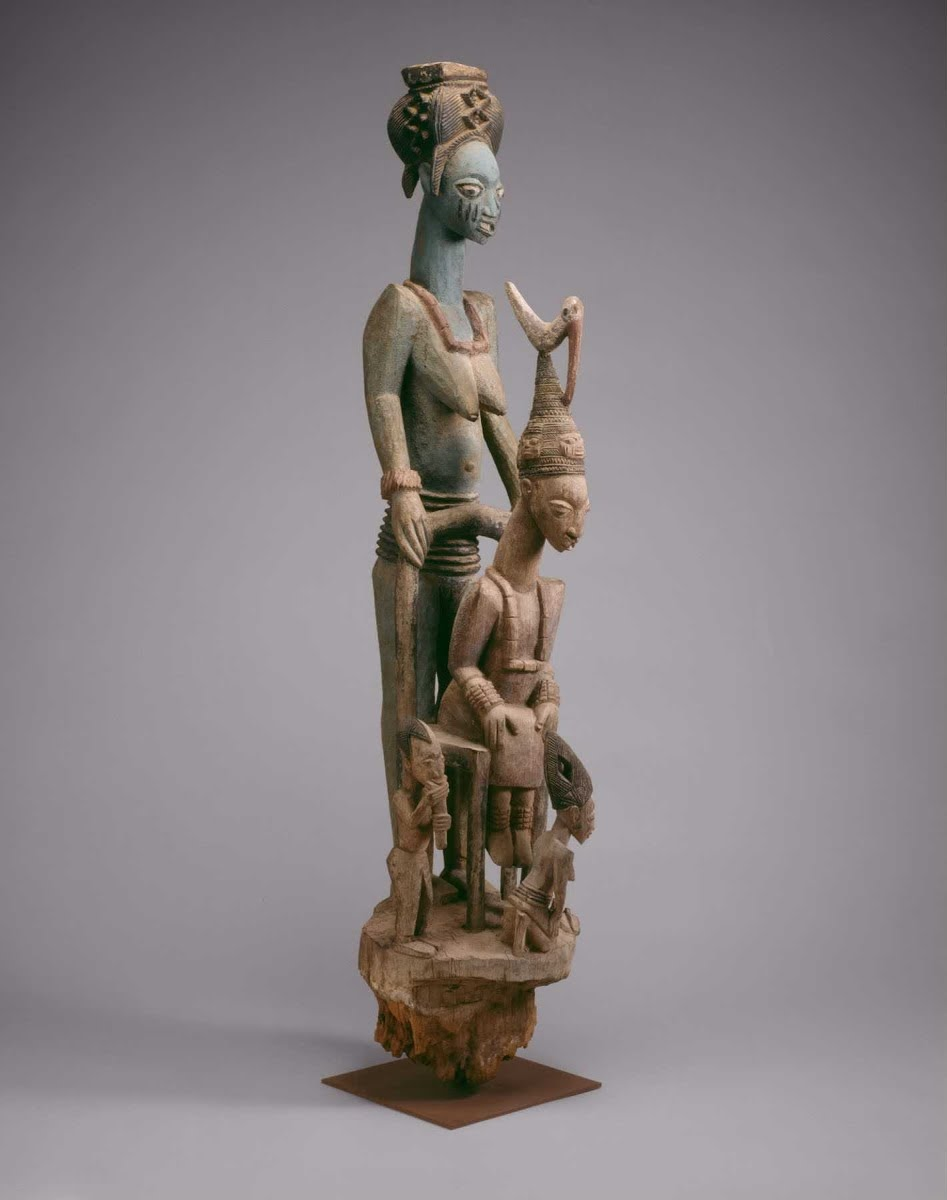
Title: Veranda post of enthroned king and senior wife (Opo Ogoga)
Origin: Olowe of Ise (Yorbu peoples).
Date: c. 1910-1914 C.E.
Material: Wood and pigment
Function: show equality among royal partnership
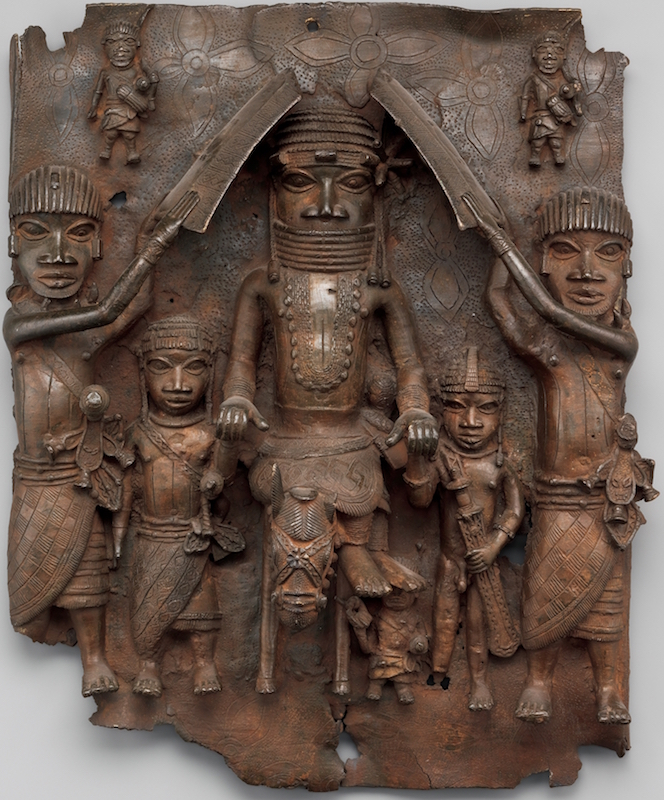
Title: Wall plaque, from Oba’s palace.
Origin: Edo peoples, Benin (Nigeria).
Date:
Material: 16th century C.E. Cast brass.
Function: importance within the court. This convention of sizing human figures based on status is known as “hierarchic scale” and is found in artwork from cultures around the world and across time.
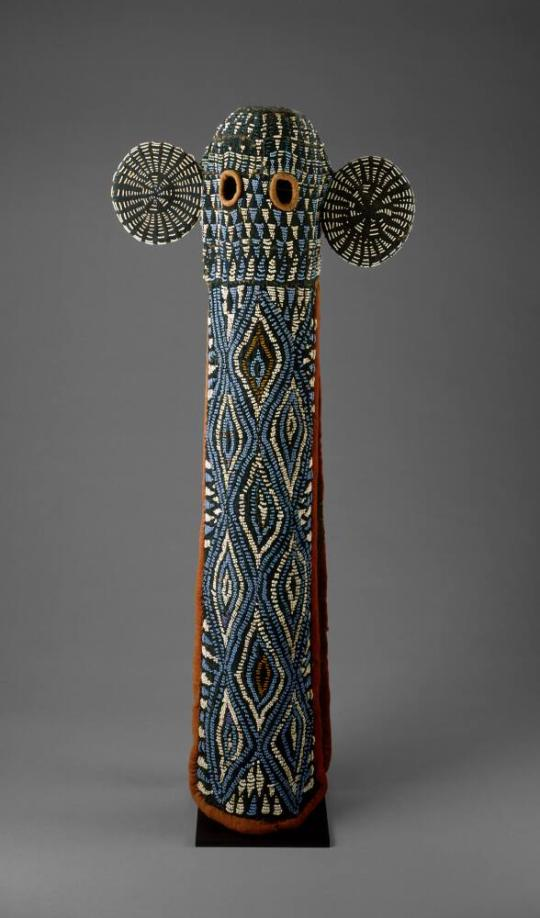
Title: Aka elephant mask Bamileke
Origin: (Cameroon, western grassfields region).
Date: C. 19th to 20th century C.E. Wood,
Material: woven raffia, cloth, and beads
Function: a potent symbol of political power, authority, and wealth, historically worn by members of the elite Kuosi society. It is used in ceremonies to honor the king (fon), reinforce the social and political hierarchy, and promote social harmony